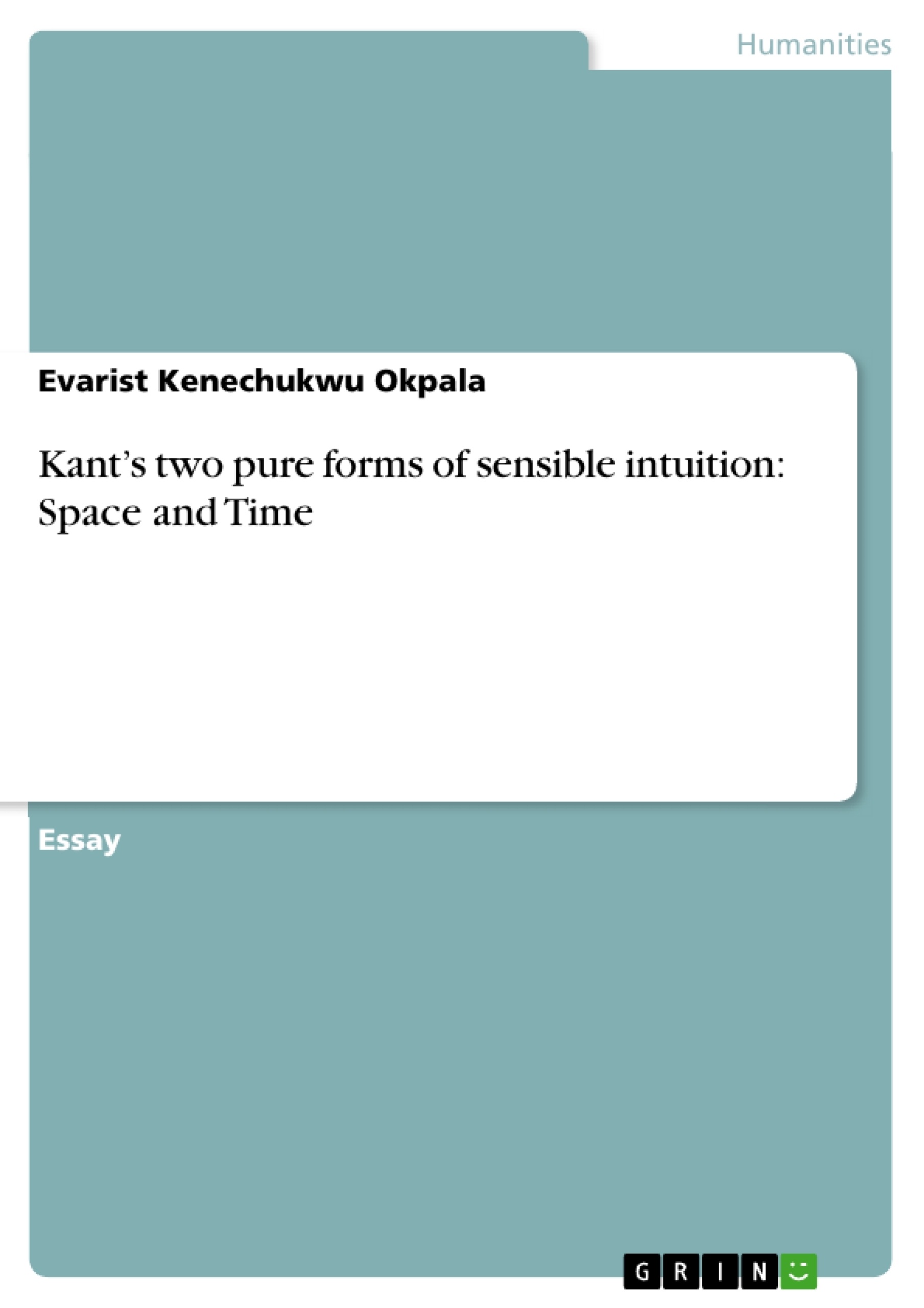For Kant, the only means a cognition/knowledge may relate immediately to objects, and at which all thought as a means is directed to an end, is intuition. This intuition only becomes a possibility when an object is perceived and when this perception of an object does make some effect on the mind. Suffice it to say that the whole idea of having an intuition begins with perception which is not complete until the mind has been affected by those objects. The particular capacity of acquiring representations by the very fact of the way we are affected by objects we receive is known as sensibility. Therefore, it is this possibility of sensibility that gives rise to intuition according to Kant. The relation which intuition has with its object through the process of sensation is regarded to as empirical, which means that the object of an empirical intuition is known as appearance. «I call that in the appearance which corresponds to sensation its matter, but that which allows the manifold of appearance to be intuited as ordered in certain relations I call the form of appearance». «Since that within which the sensations can alone be ordered and placed in a certain form cannot itself be in turn sensation, the matter of all appearance is only given to us a posteriori, but its form must all lie ready for it in the mind a priori, and can therefore be considered separately from all sensation».
Inhaltsverzeichnis (Table of Contents)
- General Introduction
- Space
- Time
Zielsetzung und Themenschwerpunkte (Objectives and Key Themes)
This text aims to explore Kant's theory of space and time as pure forms of sensible intuition. It examines how these a priori concepts are necessary for the possibility of knowledge and experience.
- Kant's concept of sensibility and its role in intuition
- Space as the a priori form of outer intuition
- Time as the a priori form of inner intuition
- The distinction between appearances and things-in-themselves
- The role of space and time in synthetic a priori judgments
Zusammenfassung der Kapitel (Chapter Summaries)
The General Introduction establishes Kant's framework, defining intuition, sensibility, and the relationship between perception and cognition. It introduces the concepts of space and time as a priori elements necessary for knowledge. The section on Space delves into Kant's argument that space is not a pre-existing container but rather the a priori form of all outer sensory perception. It contrasts this with previous philosophical perspectives and highlights the importance of spatial properties for object differentiation and cognition. The section on Time explores Kant's assertion that time, unlike space, is not directly perceived but is a necessary a priori condition for experiencing simultaneity and succession. It discusses time as the form of inner sense and its role in the general condition of appearances.
Schlüsselwörter (Keywords)
Kant, space, time, intuition, sensibility, a priori, appearances, things-in-themselves, synthetic a priori judgments, transcendental aesthetic, perception, cognition.
- Citar trabajo
- Evarist Kenechukwu Okpala (Autor), 2024, Kant’s two pure forms of sensible intuition: Space and Time, Múnich, GRIN Verlag, https://www.grin.com/document/1514633



